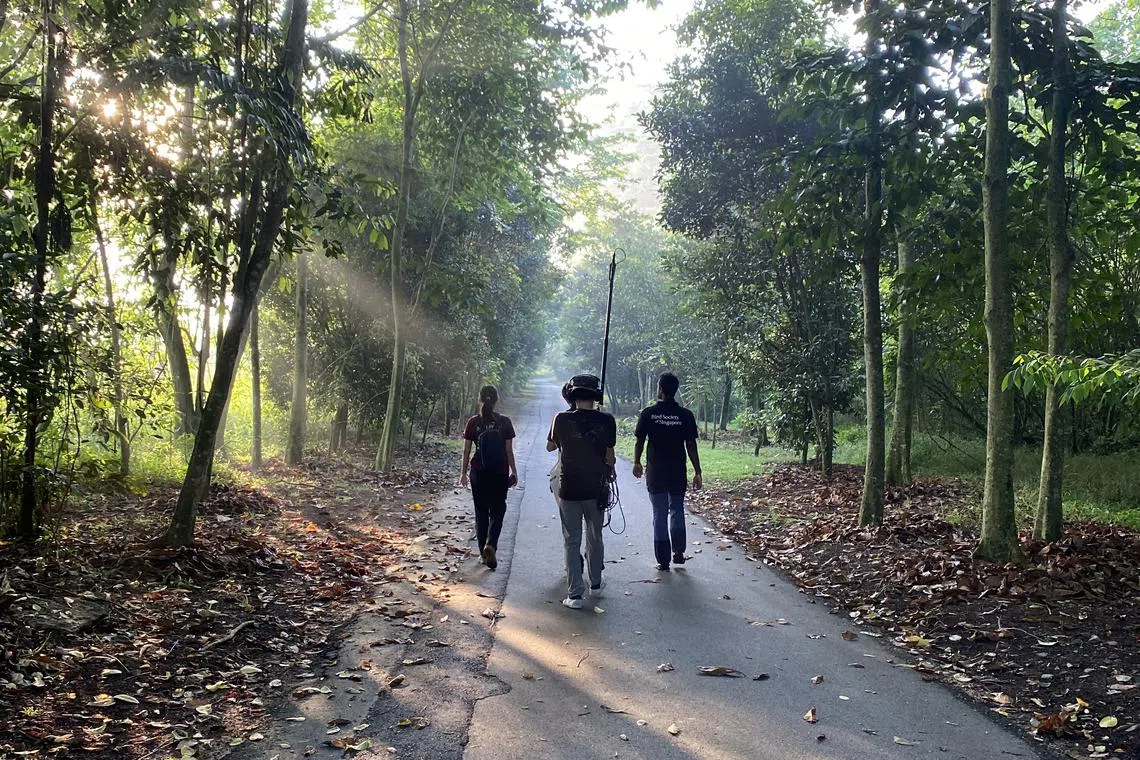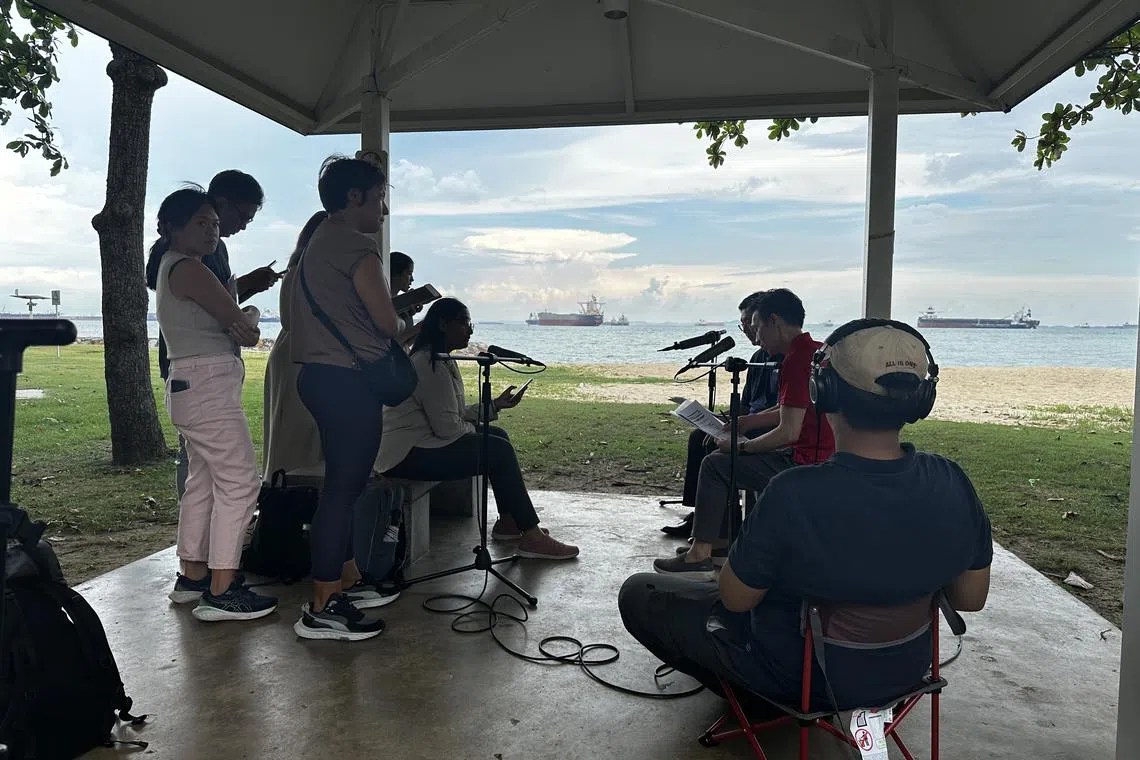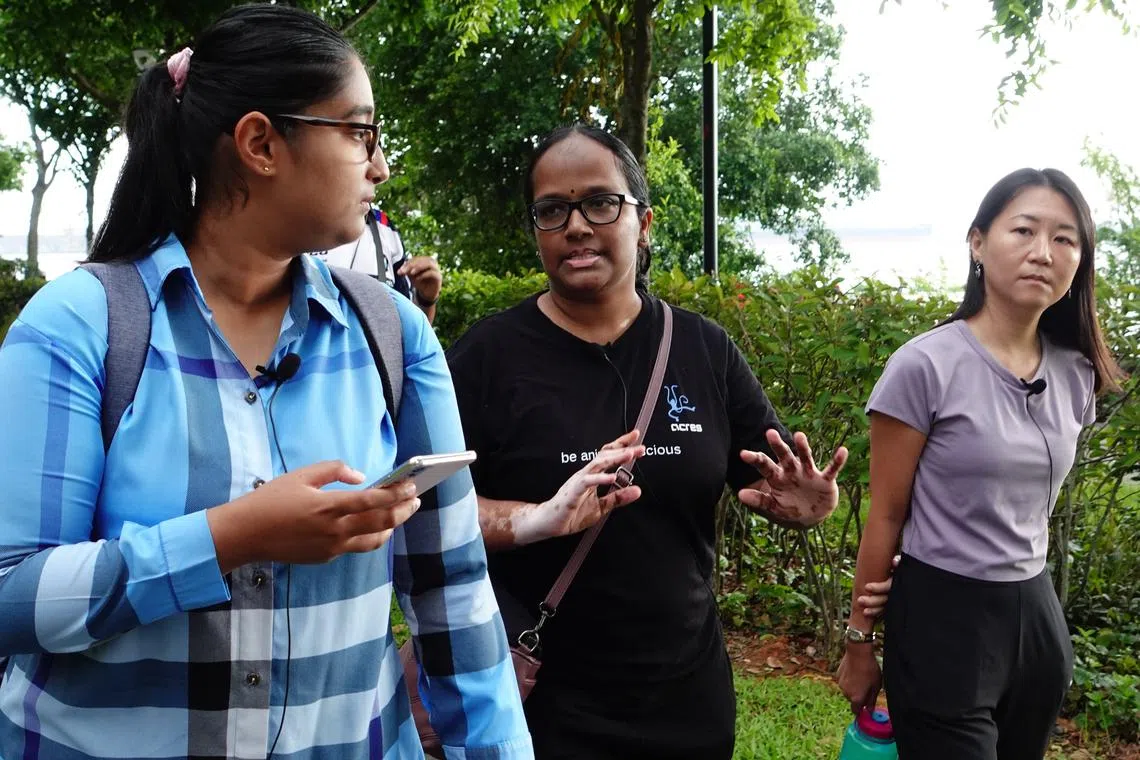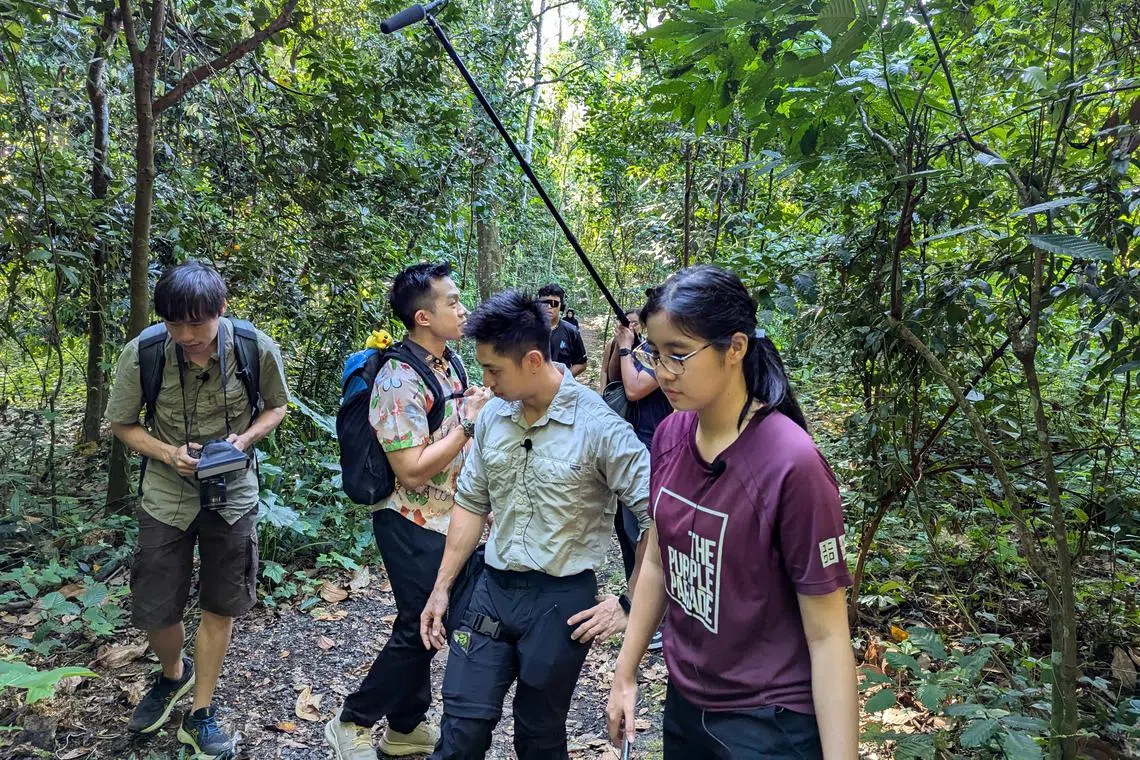Saving the sounds of Singapore’s nature spaces in outdoor podcast series
Sign up now: Get ST's newsletters delivered to your inbox

The Straits Times' podcast team recording guests during a walk at Kranji Marshes.
ST PHOTO: HADYU RAHIM
Follow topic:
SINGAPORE – Surrounded by the symphony of Singapore’s wildlife, a growing group of nature guides are bringing people closer to the island’s rich biodiversity, which can often go unnoticed to the untrained eye or ear.
This comes as more spaces in the land-scarce island-state are expected to be developed for housing and other needs.
Before these spaces fall silent and their tales told by conservationists are lost, The Straits Times documented these sounds and stories with a four-part outdoor podcast Green Trails, in 2024.
The Green Trails podcast series clinched the gold award for Best Podcast at the Digital Media Awards Asia 2025 on April 23, both organised by the World Association of News Publishers (Wan-Ifra).
Throughout the year, the podcast team hit the trail with environmental experts, lugging audio equipment through Singapore’s many parks, from the mainland’s largest mangrove forest in Sungei Buloh Wetland Reserve, to Punggol, one of its youngest towns.
The episodes, released every three months, tackled environmental issues facing the island state, which ranged from those faced by migratory birds here to how the future Long Island could impact local marine life.

ST’s podcast team recording the first guests for its Green Trails podcast series at East Coast Park.
ST PHOTO: TEO TONG KAI
This special-edition series was hosted by ST correspondents Ang Qing and Shabana Begum, and edited by podcast producer Hadyu Rahim.
ST’s podcast editor Ernest Luis said: “The topics covered in this series are also very hyperlocal, and we set out to make it relatable and appealing to the Singapore audience.”
For instance, cheeky long-tailed macaques have made headlines in recent years due to their clashes with humans, which include ransacking housing estates for food.
In the fourth episode aired in November 2024, the team visited macaque hot spots in Punggol with two animal advocates to find out how residents can responsibly live with urban-adapted animals.

ST correspondent Shabana Begum and her guests at a macaque hot spot in Punggol.
ST PHOTO: ELSA GOH
This was National University of Singapore (NUS) lecturer Lim Cheng Puay’s favourite episode.
“This episode provides a very comprehensive coverage of human-wildlife conflict – from the biology and behaviour of the monkeys to how one can enjoy being in close proximity to wildlife in a safe and responsible way,” said Mr Lim, who teaches a course on Singapore’s natural heritage.
“These podcasts will be very helpful for students reading the course, to have a deeper understanding of local conservation issues and also learn from how the experts in the episodes communicate complex concepts in a clear and engaging fashion,” he added.
To capture places in optimal conditions for the listener, the team chose locations and timings when wildlife was the most active and human traffic was at its lowest.
In the first episode, for instance, the team spoke to one of Singapore’s oldest non-profits, Nature Society (Singapore), at a popular trail in Sungei Buloh Wetland Reserve on a weekday afternoon during high tide when migratory waterbirds were expected to appear as their feeding haunts were flooded by the sea.
Obviously, recording outdoors came with technical difficulties, which challenged the team’s capabilities.

Podcast producer Amirul Karim capturing ambient sounds at Sungei Buloh Wetland Reserve.
ST PHOTO: EDEN SOH
This was especially so for the 39-minute show on the future Long Island project and sea-level rise, which took an entire day to record at East Coast Park and Marina East.
Long Island is a planned offshore development that aims to protect the low-lying East Coast area while providing new amenities and land space for Singapore. Being a mega-reclamation project, there are concerns about how construction will affect nature and marine life.
Assistant podcast editor Lynda Hong said: “These on-site recordings were the most lengthy as we had to seek the opinions of diverse stakeholders – from government officials in charge of the project, to experts concerned about the impact on nature, and youth in the East who may live on Long Island in the future.”
Another challenge was the lack of wildlife sounds to capture at East Coast Park, which is not as ecologically rich as a nature reserve. To get around it, Mr Hadyu combed audio libraries and archives to get suitable sound clips.
While recording with Mr Lester Tan, chair of the Nature Society (Singapore) marine conservation group at Marina East, a jet plane circled the area every few minutes, forcing the team to pause and re-record a few times.

The podcast team looking for birds at Marina East.
ST PHOTO: TEO TONG KAI
“The biggest difference between studio and outdoor recording lies in dealing with external factors. Field recordings often involve pauses and background noises – some we can control, while others we have to work around or include,” said Mr Hadyu.
The first two episodes were scripted for a question-and-answer format during the field recording. To incorporate more anecdotes shared by guests on the ground and to make room for the prospect of encountering nature in an unforeseen way, the last two episodes were narrated by Ms Shabana and Ms Ang only after the field recordings.
This allowed the trio from the Entomological Network of Singapore, a group of insect researchers and hobbyists, to discuss everything related to insects in Singapore – from the country’s historical link to beetle science, to the recent approval of 16 insect species for consumption here – in the third episode.

ST’s podcast team and its expert guests deep in the trail at Windsor Park.
ST PHOTO: LYNDA HONG
Mr Luis said: “Though Singapore is such a small country, we have found that the global experts whom we invite for our main Green Pulse podcast series are also following the eco issues we raise locally. This shows the importance of the Singapore voice in the larger environmental conversation.”
Ang Qing is a correspondent covering local and international breaking news at The Straits Times, with a focus on the environment, crime, technology and social issues.
Shabana Begum is a correspondent, with a focus on environment and science, at The Straits Times.

